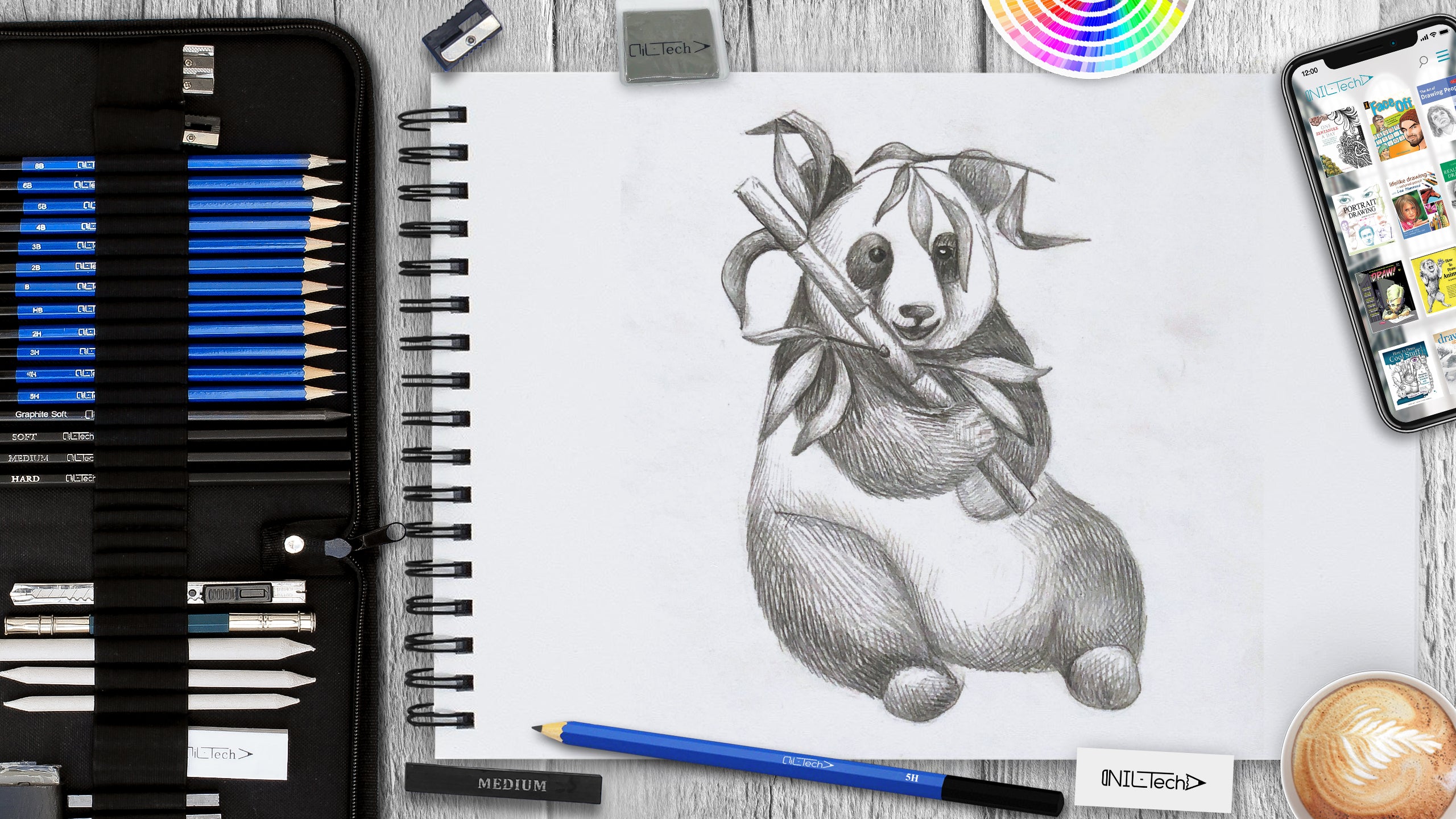
How to Draw a Panda
Nov 19 , 2020

Hi everybody, welcome to a new NIL-Tech drawing tutorial: "Panda". When we think of large pandas, we think of charming black and white bears. They are adorable and also have many fans around the world. Un'bear'ably cute and roly-poly, large pandas have captured hearts worldwide. In addition to being completely adorable, pandas are also really strong and remarkably lean.
Here are some interesting facts about cute Pandas:
1. A giant panda is a lot bigger than your teddy bear. Giant pandas look cuddly and cute when you browse photos online, yet it's much larger than you believe. A grown-up panda weighs more than 45 kilos (100 pounds) and can be around 1.5 meters (5 feet) long!
2. Giants pandas are good at climbing trees and can swim. Giant pandas can't stand and do kung fu actions like Po in Kungfu Panda. However, they are excellent tree climbers. They can climb trees from 7 months old. Giant pandas are bears, and like other bears, they can swim.
3. Pandas go from pink to white and black (or brown). Pandas are born looking like baby badgers - fur-less, pink, and also blind. The iconic black and white color start to show up later, after about three weeks. Not all gigantic pandas are black and white! A few are brown and white, yet these are very unusual.
4. Pandas have a lot of fans since they look charming. "The looks of a teddy bear" are what make pandas so popular. Pandas appeal to our "cuteness receptors" since they have large, front-facing eyes and are incredibly furry. That's why we think about them as cuddly and charming.
5. An adult panda can eat 12-38 kilos of bamboo each day! A 45-kilo adult (and pandas can reach 150 kg in captivity) spends as long as 14 hrs eating. So they have plenty of time to eat 12 to 38 kilos of bamboo a day, and Pandas' favorite food is bamboo shoots.
In this tutorial, we used the following supplies:
- B pencil
- 3B pencil
- White Vinyl Eraser
- Kneaded Eraser
STEPBYSTEP10
Let's draw a "Panda" step by step

Step 1. With circles and ovals, outline the body and head of the panda (pencil B).

Step 2. With circles and ovals, outline the upper and lower legs (pencil B).

Step 3. Connect the circles with smooth lines to give integrity. Draw the muzzle and add the ears (pencil B).

Step 4. Erase all excess construction lines and brighten the contour (pencil B).

Step 5. Over the construction lines, draw a bamboo with leaves in the hands and add another branch, lying on his head (pencil B).

Step 6. Erase all intersection lines between the bamboo and the panda to bring the bamboo to the foreground. Also, brighten the contour (pencil B).

Step 7. Start hatching with dark spots, adding them an overall tone (pencil B).

Step 8. Now add details to these areas. With strokes, add the texture of the wool and light/shadow parts. For this, use a softer pencil. The pencil should be as sharp as possible, so it will be much easier to draw the texture (pencil 3B).

Step 9. Take a harder pencil and, with the same shading, add shadows on the fur's white areas and add more details (pencil B).

Step 10. The final step is to hatch the bamboo. The main thing is not to make the tone too dark so that it does not merge with the panda's tone (pencil B).

 |
Drawing Pencil SetExcellent GIFT IDEA - Non-Toxic and safe, easily portable and made with quality top-notch materials. Basic and innovative drawing supplies come together in NIL Tech set as an exceptional replacement for old-fashioned pencil boxes. The main attraction at any occasion from your drawing enthusiast friends, sketchers, artists to your kids or students boosting their creative projects and enjoy their ear-to-ear smile! |






